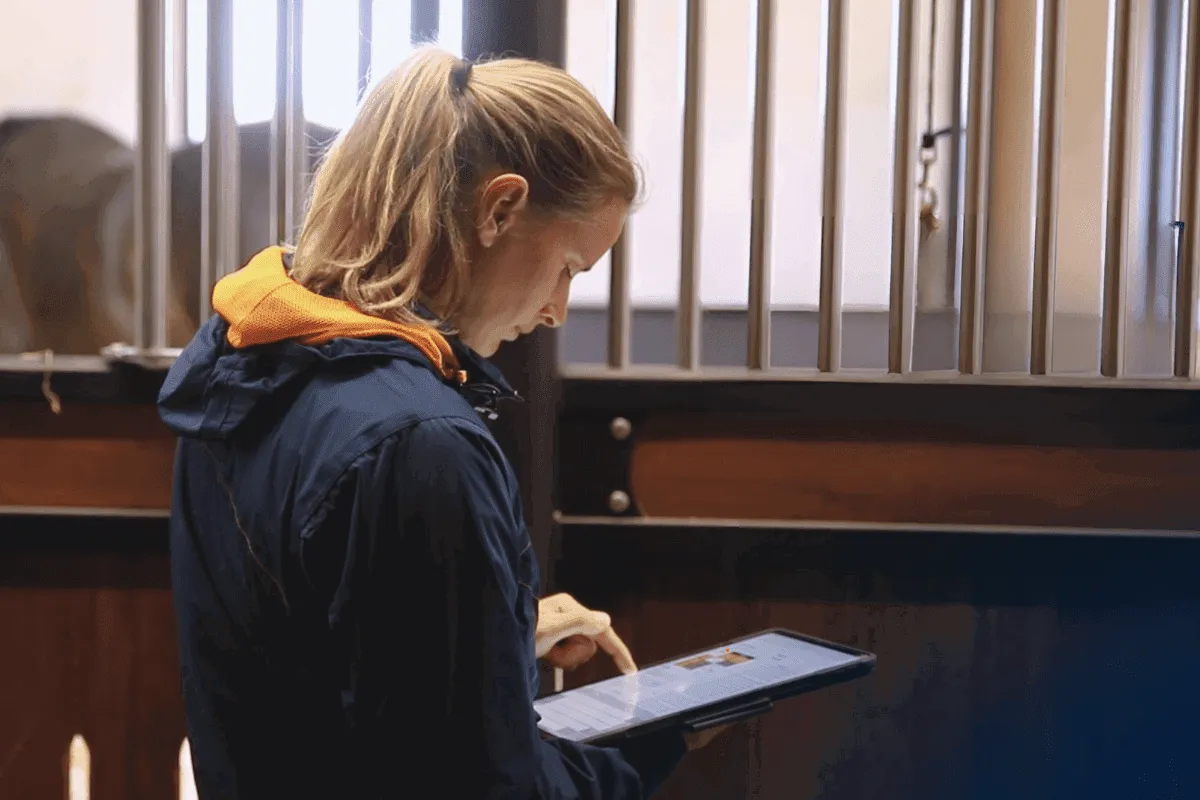We want the best for our horses. Every day, we work to give them the best care, the best training with lots of time for recovery and regeneration, and a balanced diet so that they can be “happy athletes”. Injuries? We do our best to prevent them. But, like any athletes, horses can get injured. In this blog article, we’ll discuss equine tendons and tendon injuries. You’ll learn about what tendon injuries are, how they occur, how to avoid them and how feed can help with recovery.
What are tendon injuries?
Joints are important for movement. They play an important role in a horse’s mobility, transferring energy from muscle to the bones. That is how bodies move. Tendons are strong, fibrous structures that connect muscle to bone. Although tendons are strong, they don’t get as much blood as, say, muscles, so nutrients and waste products are not as easily transported to and from the tendons. That’s also the reason why injured tendons need time to heal.
A tendon injury can vary in severity, ranging from mild irritation or inflammation to serious tearing of the tendon fibres. Such injuries can have different causes, such as excessive overload, incorrect training, abrupt movements or training on unsuitable surfaces. However, abnormal conformation and abnormal positioning of the feet and legs can also cause tendon injuries. When a tendon injury occurs, the horse may show signs like swelling, lameness or sensitivity in the affected area and mobility will be limited accordingly.
Every tendon in the body can be subject to injury, but the most common injuries occur to the tendons found on the back of the cannon bone, specifically the superficial and deep digital flexor tendons, the accessory ligament, or the suspensory ligament.
Tendons and ligaments are not the same!
Don’t confuse tendons with ligaments. Tendons connect muscles to bones, while ligaments connect bones to other bones at joints, and also connect bones to other bones at various places in the body. Ligaments are, on the whole, less elastic than muscles and can be injured if the joint is overstretched. The purpose of ligaments is to stabilise the joints and prevent their dislocation. Each of these structures plays an important part in maintaining stability and movement in the body. Although tendons and ligaments differ slightly, they need the same nutrients for optimal use and regeneration. Type I collagen is an essential building block for the body.
How do horses get tendon injuries?
Injuries happen when they’re least expected. When tendons are overstretched, they can tear. If the tears are slight and have enough time to heal, you may not even notice them. Types of tendon injuries range from minor fibre damage to a complete rupture of the tendon. The causes for tendon injuries are manifold and can be from training or external trauma. A frequent cause in horses is overuse, but overheating, age and conformation can also have impacts on their occurrence.
Did you know that your horse’s conformation can tell you much about how well it can withstand loads? Improper positioning of the leg or hoof can cause overload to the tendon. Although correcting crooked legs is only recommended for young horses, the farrier can naturally make sure that the hoof position is as balanced as possible. Proper care and preventive measures can minimise equine tendon injuries.
Once the tendon is damaged, inflammation, heat development and swelling occur. In many cases the horse goes lame, but in others, recovery is quick. However, that’s doesn’t automatically mean that the tendon injury is fully healed. An ultrasound exam will show the severity of the tendon injury and provide guidance for a treatment plan.
Prevention is key
How can tendon injuries by prevented? Early detection is important – small abnormalities often lead to larger problems later on. Examine your horse’s legs every day by feeling them with your hands. Know your horse. Note any changes. Has a leg become warmer or thicker? Does the horse react when you touch this leg? To prevent injuries, it’s important that you know your horse and can recognise anomalies.
Other preventive measures:
- Ride on quality surfaces
- Make sure your horse gets regular exercise
- Have your horse’s hooves shod or trimmed regularly by a farrier
- Make sure your horse’s training is well-structured
- Don’t forget warm-up and cool-down phases
- Cool your horse’s legs with cold water and then apply a cooling gel
And extremely important: Make sure that your horse gets enough rest and recovery time between training sessions.
What many horse owners don’t know is the important role of diet in the prevention of injuries, including tendon injuries. The right nutrients can provide preventive support by promoting tendon health and accelerating the natural healing process in injured tendons.
How feed plays a role in healing
Rest is essential for the body to heal. You can support the healing process with feeds that promote healing. How can you do that? Through optimised nutrition. This approach involves feeding specific nutrients that promote recovery from certain ailments. The goal is to provide the right nutrients that will help to prevent or heal an injury – in this case, a tendon injury.
Through scientific studies – including a study on ArtiTec– we are continually learning more about which nutrients can help relieve certain problems. We know, for example, that tendon injuries respond well to glucosamine, MSM, collagen, copper, zinc, magnesium, vitamin C and vitamin K3. These substances help to keep bones, tendons and joints healthy. Imagine them as essential building blocks.
In supporting the natural healing process, we also like to work with essential oils due to their pain-relieving and anti-inflammatory properties. Our unique feed supplement Arti Repair contains types I and II collagen and ESM (eggshell membrane). These elements have proven positive effects on the healing of tendon injuries.




